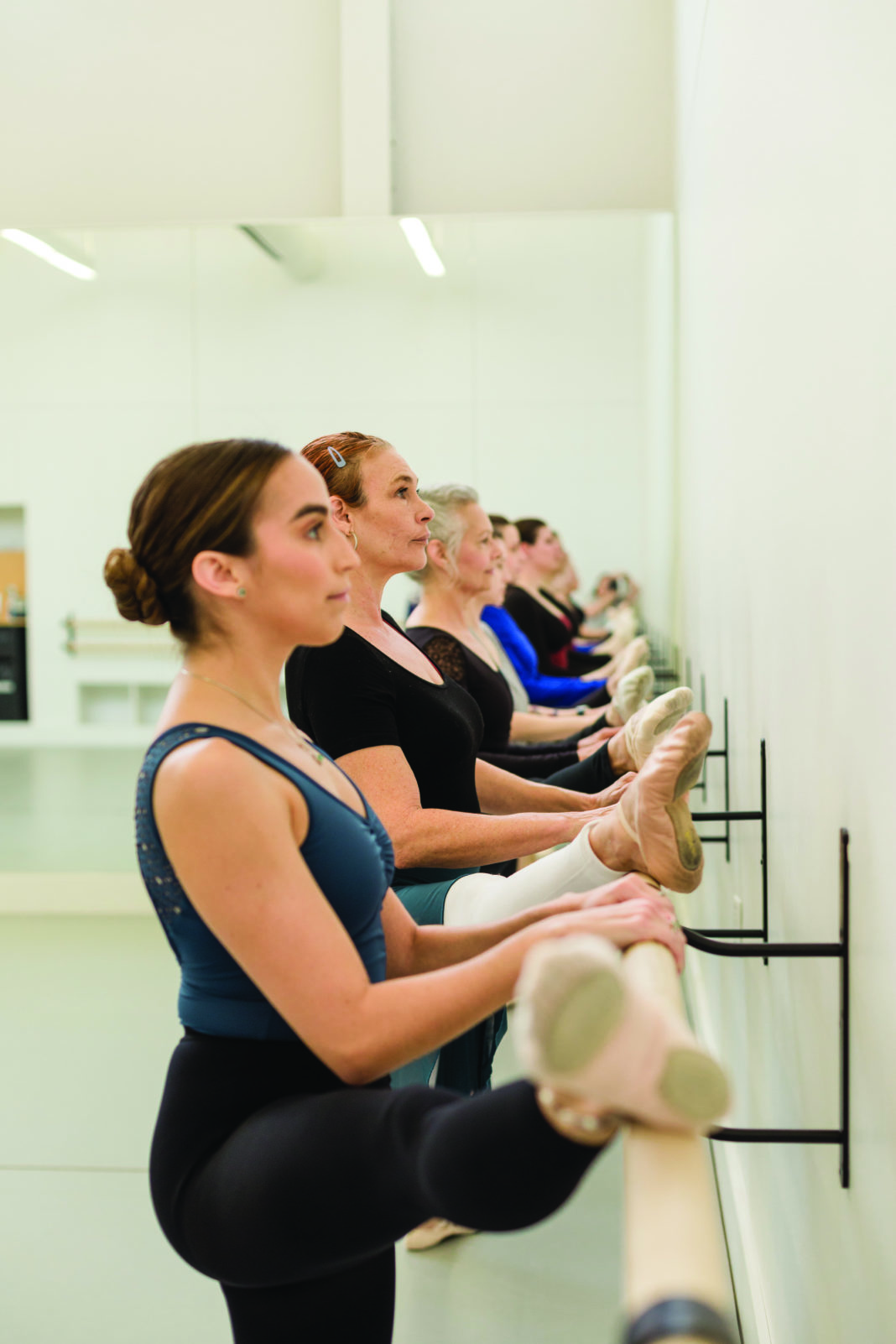Ballet lessons for children are fairly routine, and many take a visit to a performing arts center to see professional companies perform. But increasingly, more adults are recognizing the benefits of the practice of ballet as novices.
Arlene Minkhorst, director of education for the Tulsa Ballet Center for Dance Education, says people come to adult classes from various age groups, health levels and experience backgrounds.
“I think people are beginning to understand that it’s not too late to start dance at an older age,” she says. People may think they have to be young and look like a conventional ballet dancer to dance. But you don’t – you just have to want to come in and move.
The benefits of ballet classes for adults are vast, going beyond the most obvious of general exercise. Balance, stability and an improvement in posture top the list of benefits for Macaira Pinto, school administrator for the Yvonne Chouteau School of Oklahoma City Ballet.
“Ballet combinations are not designed to be overly physical or aerobic. They are working small muscle groups that you didn’t know you owned until you get up the next morning,” she says with a laugh.
Practicing dance can also improve focus and may ultimately help in fighting off cognitive sluggishness as you age, as the art form requires the use of body and mind in coordination. Pinto also mentions the release of endorphins that happens when a person exercises.
“You’re going to walk out of ballet class happy, even if you don’t know why,” she says.
But starting a ballet class as an adult can be intimidating. Those who are brave enough to try can expect to start with the very basics of foot and arm positions, and to work on holding the body in a proper posture. The teachers will be patient, and excited to answer questions and make modifications to movements for all ability levels. Ballet footwear will be required, but clothing can usually be anything comfortable.
Ultimately, it comes down to taking the plunge.
“Somebody just has to come with an open mind and as little apprehension as they can manage. And just do it for themselves,” says Minkhorst.
If they give it a shot, they just may find the answer to why dance is an important part of culture and an enduring form of expression.
“Dance can be done by everyone – from the baby that starts swaying in front of the television to the 100-year-old that is tapping his foot to the beat,” says Pinto. “Inherently, we have a joy within ourselves when we dance, so it keeps human beings emotional, it keeps them moving, it keeps them expressing, it keeps them joyful.”
Ballet 101
Though no experience is required for most beginning ballet classes for adults, it can help to know some of the terminology – much of which is in French.
Turn out: Rotating the feet out from the hip socket
Plié: Bending the knees while the feet are turned out from the hip
Tendu: To stretch; it involves a movement wherein one foot slides across the floor with the toes touching the floor, then returns.
Relevé: Starting in a plié position and rising up
Rond de jambe: A circular movement of the leg
Dégagé: Pointing the foot
Looking for a class? Both OKC and Tulsa Ballet schools offer options. If these are not convenient, check with your local ballet school. If they don’t offer a class for adults, consider gathering a few friends and asking for a private class. Some schools may even offer “open” classes for anyone to try out – children and adults alike.
Image cutline: Tulsa Ballet adult classes welcome dancers of all experience backgrounds and fitness levels. Photo by Jessie Kenney of Juneberry Photo
























